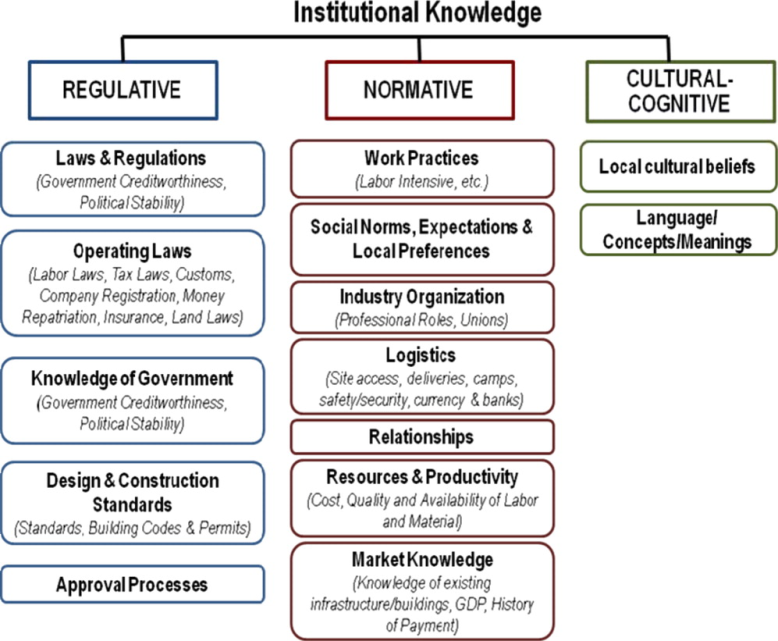Capturing Institutional Knowledge: Managing Maintenance Team Transitions
Maintenance teams are important in keeping costs low and efficiency high for the company. Their success relies greatly on building and maintaining institutional knowledge, giving them an opportunity to streamline processes, anticipate needs, and mitigate issues before they arise.
But employee turnover, information siloing, and a general lack of communication can create barriers to building collective institutional knowledge, greeting knowledge gaps that can cause an organization to move backward rather than forge ahead. With training programs, communication tools and complex software platforms, it’s easier than ever to build an institutional knowledge base. But too many businesses still fail to do so.
What is institutional knowledge?
Institutional knowledge is the tacit knowledge, collected wisdom, and cultivated expertise accumulated within an organization over time. It encompasses the information, insights, best practices, procedures, and lessons learned critical to effective decision-making, problem-solving, and overall success. Institutional knowledge is often embedded in the minds of employees, and may not exist in systems, processes, and documentation.
Institutional knowledge is often gained through experience and is a hidden skill that is nonetheless extremely important, particularly for building maintenance staff. Maintaining institutional knowledge helps increase efficiency, improves problem-solving and decision-making, and improves continuity and risk mitigation.
Institutional knowledge encompasses best practices, lessons learned, and successful approaches that have been refined over time. Preserving best practices through knowledge sharing allows organizations to sustain and build upon past successes.
It’s particularly difficult to replace or replicate a seasoned, skilled employee’s institutional knowledge. As the old expression goes, there is no substitute for experience. The tacit knowledge and contextual understanding experienced employees bring is a precious resource for organizations, even though it often cannot be quantified. Learning from experience and knowing how to avoid pitfalls creates benefits that may not even be appreciated until they’re no longer there.

Why is capturing institutional knowledge important for maintenance teams?
Capturing institutional knowledge is of utmost importance, especially considering the demographic shift happening with the retirement of baby boomers. With approximately 10,000 baby boomers reaching retirement age daily, and all boomers expected to have reached that age by 2030, organizations face a significant risk of losing valuable knowledge and expertise.
For maintenance teams, this is particularly important given the importance of maintaining schedules and the complex nature of managing equipment.
Companies often fail to recognize the extent of an employee's vital information until they are no longer with the organization, highlighting the critical need for effective knowledge sharing and preserving institutional knowledge.
Think of it like this: a seasoned building manager knows the intricacies of a building’s operations and how to quickly mitigate issues. For example, the recurring problems in a particular room, or with the HVAC system. Maybe one employee repeatedly fails to note when they’ve signed out a piece of equipment, or one machine that perpetually breaks down and is in need of replacement. If that building manager retires or leaves the company, the new building manager will have to re-learn those things, and during that learning period, old frustrations will return, leading to confusion and inefficiencies.
Staff retirement
When a staffer retires, the company loses its years, if not decades, of specialized knowledge, skills, and experience. This expertise may be essential for maintaining business continuity, ensuring smooth operations, and upholding quality standards. Capturing this institutional knowledge allows organizations to retain valuable insights and prevent a loss of expertise.
When an employee leaves the company without sharing their knowledge, it can create significant knowledge gaps. These gaps may result in decreased productivity, increased errors, and delays in decision-making.
Unexpected transitions
When a reorganization requires employees to change roles, the skills and best practices those employees built into their roles can be thrown into flux. Removing employees from their roles can create inefficiencies and lead to more mistakes, since they may lack the necessary expertise or familiarity with new responsibilities. It may be difficult or impractical for the reorganized employees to share knowledge related to their previous roles, leading to knowledge gaps and potential disruptions in operations.
Increasing employee turnover
21% of millennials report they have changed jobs within the last year, more than three times the number for any other generation. Millennials change jobs so frequently they’re sometimes called “the job-hopping generation.” This makes a defined knowledge-transfer process even more crucial.
Knowledge transfer checklist: 8 tips to ensure a smooth transition
By capturing institutional knowledge, companies can bridge these gaps and ensure the seamless transfer of critical information to new or existing employees. Implementing knowledge-sharing practices can help mitigate losses caused by employee turnover and keep the company working at peak efficiency.
To stay ahead of these shifts and maintain smooth operations, creating a culture of knowledge sharing becomes crucial. By implementing robust knowledge-sharing practices, organizations can ensure that knowledge is captured, documented, and shared among employees before unexpected transitions occur.
This approach involves creating a culture that values knowledge sharing, establishing processes to capture and document critical knowledge, and implementing tools or platforms for easy access and retrieval of information. Regular knowledge-sharing activities such as training sessions, mentoring programs, and cross-functional collaborations can also facilitate the transfer of institutional knowledge. By systematically sharing institutional knowledge, organizations can equip employees with the necessary insights and resources to adapt to new roles effectively, minimizing the impact of unexpected transitions and promoting continuity in operations.
- Conducting exit interviews: Interviewing departing employees to gather insights, experiences, and suggestions before they leave the company.
- Cross-train facility staff: Prioritizing cross-training facility team members ensures that one employee’s absence won’t interfere with day-to-day processes. Having multiple employees familiar with every job increases flexibility and agility in today’s work environment.
- Documenting processes and procedures: Creating comprehensive documentation of standard operating procedures, troubleshooting guides, and other relevant information.
- Establishing knowledge-sharing platforms: Implementing technology tools, such as intranets, wikis, or collaborative platforms, where employees can share and access knowledge easily.
- Get ahead of retirements: When possible, an employee’s last few weeks before retiring or leaving the company should set aside time to meet with other staff members, discuss daily routines and tasks and ensure a smooth transition to the replacement staff.
- Encouraging mentorship and knowledge transfer: Facilitating mentoring programs to pair experienced employees with successors, enabling the transfer of tacit knowledge and fostering knowledge exchange.
- Promoting a knowledge-sharing culture: Creating an environment that encourages employees to share their knowledge, recognize the value of institutional knowledge, and actively participate in knowledge-sharing initiatives.
- Leverage a CMMS: A strong CMMS platform is a good way to simplify the knowledge transfer process. A CMMS retains historical data from work orders, equipment management, and scheduling, providing a new employee with a new opportunity to leap in without missing a step. The ability to identify faulty assets and make better decisions sooner. A good CMMS (and employees trained to use it to its full potential) can greatly reduce learning curves and inefficiencies.
Get ahead of staff transition with a Brightly CMMS
Your employees and partners are vital to building a framework of institutional knowledge. Partnering with Brightly to implement a CMMS that simplifies your day-to-day operations can help your organization retain institutional knowledge indefinitely, making knowledge transfer and staff transitions more manageable for everyone, and keeping your organization strong.
Speak with a Brightly expert about how a CMMS can benefit your organization.



